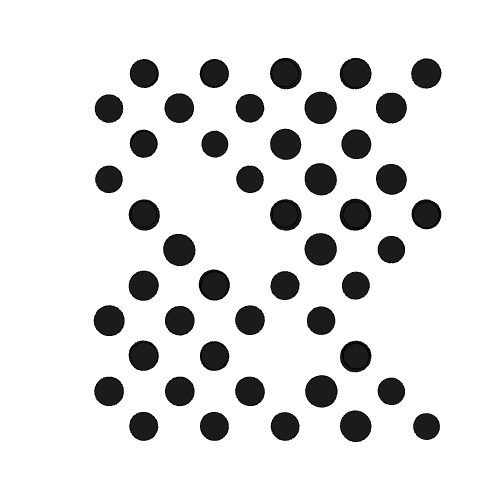In computational design, the exploration of new design possibilities is limited within the bounds of predefined variables. The definition of such variables forces the designer to focus too early on the final solution rather than keep developing an initial idea. A new computational design approach based on problem learning could help designers escape mental sets and be more creative.
Imagine an artist who wants to make a mosaic out of stone pebbles. He orders from an online store a box containing stones of different shapes and sizes. Once delivered, he starts searching in the box for stones with smooth edges. Could he ever expect to find anything besides stones?
Now imagine the same artist searching for stones on the shore. He finds an entire universe populated by stones, shells, glass pebbles and much more. He starts handling stones and examining them. Suddenly he stumbles upon a glass pebble and soon realises that it has smooth edges too. But a glass pebble has additional properties: it is translucent and comes in vivid colours… What an idea! Let’s make a mosaic with glass pebbles and put a light underneath! It may look more interesting than having just an opaque surface made from stones. What other uses suggest a surface made from glass pebbles?
Now let’s get back to the ‘searching in a box’ scenario. In that example, the ‘problem’ of making a mosaic was framed by the artist according to his knowledge and experience. Mosaics are usually made from stones. Among these, he superimposed a ‘criteria’ which is using stones with smooth edges. Having framed the problem this way he started searching only for these stones.
This approach, based on problem-solving, is adopted by humans to deal with any sort of activity. In design, for example, one start with preconceptions about the nature of the problem and restricts the exploration process to a precise class of solutions. Computational design, which is sometimes thought to support the designer’s creativity, is subjected to the same limitations. In fact, in computational design, one would limit the exploration process within the bounds of predefined variables whose selection is subjected to preconceptions about the design problem.
In the second scenario, a strategy that at first resembled problem-solving led to a completely different outcome. What happened? There are at least two aspects worth considering to answer this question.
- Exploration. The artist decided to search for stones on the shore rather than ordering online. In a metaphorical sense, he escaped his preconceptions and started exploring. During the process of exploration, he found out that something else existed: glass pebbles.
- Analogy construction. Among the stuff encountered on the shore, the artist accidentally stumbled upon a glass pebble. By closely observing its properties he suddenly created an analogy with a stone. This analogy laid the ground for a new exploration process, starting from the properties he observed in glass pebbles that are absent in stones. This caused at the same time a shift in the design space and a reformulation of the initial problem.
To sum it up, through multiple processes of exploration and analogical reasoning, the frame of the initial problem statement progressively dissolved and allowed the artist to learn about the problem.
In design, such processes do occur. A designer will rely on his knowledge and experience to explore the implications of an initial idea and create analogy among multiple knowledge domains. This happens either before or during problem-solving. However, computational design tools do not support such a process in that they are used when a problem has already been framed. This prevents the designer from keep exploring different development directions of an initial idea.
If the artist didn’t choose to explore, he couldn’t have constructed an analogy with glass pebbles, thus missing an opportunity for creative invention. In the real world, however, the allure of framing a problem is often too strong and problem-solving a strategy apparently too efficient to compete with free exploration.
But what if we could communicate with an external agent whose scope is precisely constructing analogies for us? Our ability to escape mental sets would be greatly enforced. Artificial Intelligence could perform this task. The form of AI we are considering here cooperates with designers to achieve a common goal. As stated by Negroponte [1]:
“What needs to be articulated, regardless of the format of the man-machine relationship, is the goal of humanism through machines. The concern is to avoid dehumanizing a process whose aim is definitely humanization. Our interest is to encourage a machine intelligence that stimulates a design for the good life and will allow for a full set of self-improving methods. We are talking about a symbiosis that is a cohabitation of two intelligent species”
References
Negroponte, N. (1970). The Architecture Machine, MIT Press.
